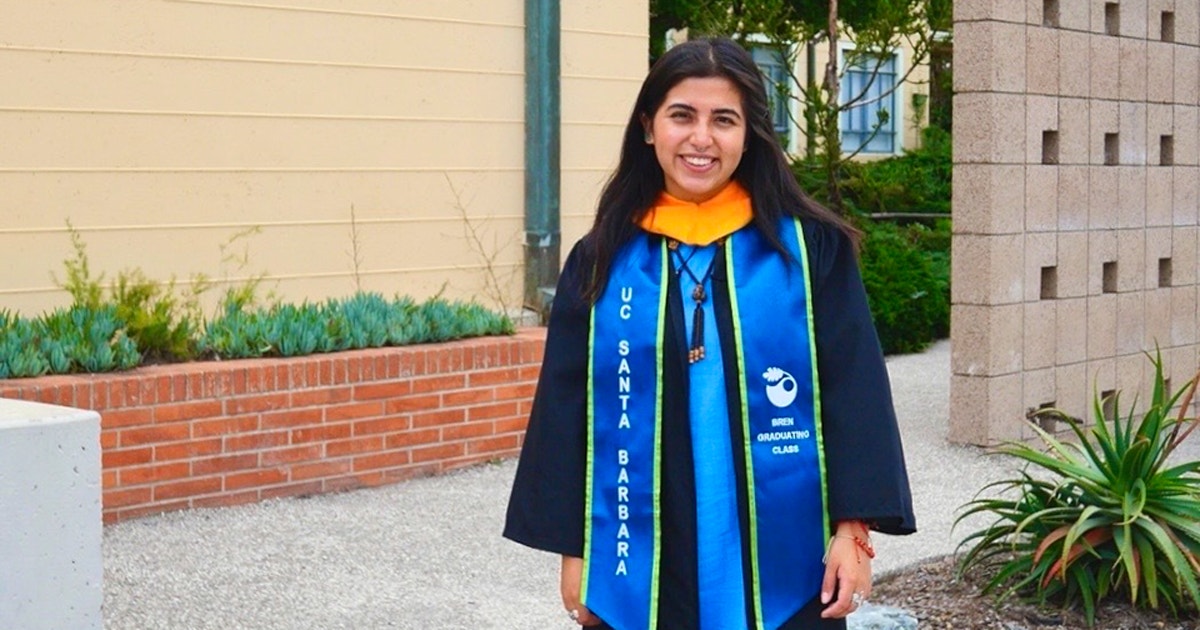In environmental stories, humans are often cast as villains. They’re the greedy, destructive antagonists that despoil habitats and decimate species. Alessandra Vidal Meza, an Audubon Dangermond Fellow supporting the Enterprise GIS Team, knows that it’s not that simple.
Vidal Meza was born in Lima, Peru, and grew up between Venezuela and Bolivia before returning to Peru in her early teens. “Growing up in South America, the landscapes are so rich with biodiversity and with identities too, that I understood that everyone connected to nature differently,” she says.
For example, the song “El Cóndor Pasa”, which connects the Andes, echoes across her childhood; it was a favorite of her grandfather. Andean Condors, which soar over air currents using their massive wings, are symbolically, spiritually, and ecologically important to cultures across the Pacific Coast region of Latin America. The birds are revered even as they are threatened by coastal pollution, poisoning, and mineral extraction.
She saw similarly complex relationships at work when she visited Corongo, her grandmother’s pueblo, after completing undergrad. Corongo’s water management system is listed as a UNESCO Intangible Cultural Heritage site. Water Judges orchestrate a sustainable water and land stewardship system alongside ritual seasonal celebrations, a process that has developed over millenia. This system is integral to the pueblo’s heritage and identity. Yet, Corongo is also the site of trout farms. Trout aquaculture is a burgeoning industry in Peru, and even small farms can profit from supplying the growing demand. Trout, however, are an introduced species, and both their presence in watersheds and certain farming practices can cause ecosystem damage.
“I think a lot about what it means to be from a place and what it means to be challenged by how we’re constructing relationships with wildlife and birds,” she says.
At the same time, she notes, it’s important to remember that “there are many ways that humans and wildlife coexist in really meaningful and beautiful ways.” As a small example, she fondly recalls how her grandmother tends to a small huerto, a garden, in her backyard, caring for the plants that draw hummingbirds, the spirits of the dead come to visit.
By training, Vidal Meza is an environmental data scientist with a Master’s degree in Environmental Data Science from University of California in Santa Barbara (UCSB). In undergrad, at the University of Puget Sound, she double majored in economics and environmental studies. In the fall, she’ll be returning to UCSB’s Bren School of Environmental Science & Management for a PhD program in environmental science. She knows she wants to work in biocultural conservation, studying human-wildlife interactions that are shaped by sociocultural values and crafting inclusive approaches to conservation that honor this interdependence.
That career path has roots in her childhood, but formally she was exposed to field work and experiential learning in undergrad, where she collaborated with interested and impacted parties across local environmental issues in Tacoma. Whether it was contemplating dam removal to aid salmon migration or making decisions about fisheries and catch sovereignty, she learned that “there are many ways to look at a problem, from a data science perspective, to ethnographic work, or even just delineating a wetland like physically going and standing in water for hours. There were a lot of ways I could engage and do things that felt actionable to people and were responsive to community.”
At Audubon she’s honed her people-centered conservation approach. She’s designing Storymaps for Audubon centers and sanctuaries that allow visitors to interact with the Bird Migration Explorer, a tool that allows anyone to follow hundreds of bird species on their epic journeys and discover challenges they face along the way. To design the kiosk maps, she’s conducted user testing interviews and collaborated closely with center staff to make sure the maps serve a wide range of audiences. Additionally, she’s working to map out demographies near centers and sanctuaries to get clear, actionable data on who lives in the vicinity and which communities do and do not have access to Audubon spaces and programs.
In the future, she’s eager to explore the ways machine learning and open science can help communities fill data gaps. ”Sometimes there are species that are valuable to communities that aren’t politically or economically valuable,” she explains, so there’s not external incentive to marshal resources towards that research. Open science practices offer the opportunity to engage people who have been or whose needs have been excluded from environmental work. She also hopes machine learning will make it easier for people to make sense of the huge amounts of data they need to make local and culturally specific decisions.
These methods aren’t without issues; navigating the complexities of data ownership and representation, considering who has access to upload data or sightings, or who has access to speak English if there’s a language barrier—all of that requires careful, intentional analysis and an ethical and communally-responsive approach to conservation. Ultimately though, she’s “excited about opportunities and spaces where we can make data feel more tangible and have people reframe it in a way that serves their representation and their mission.”

